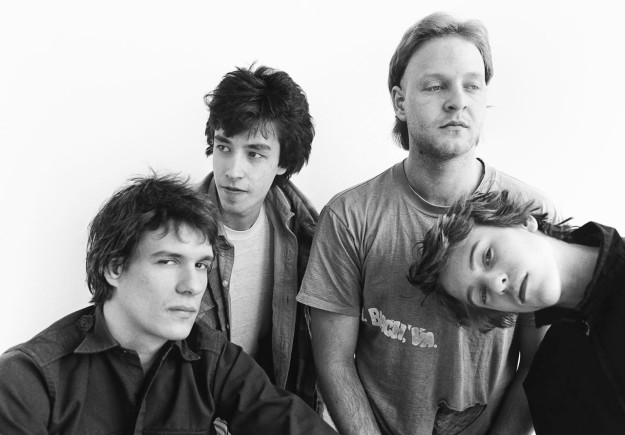What’s this? Wasn’t I meant to be writing about British folk? Yes, I was. I’ve got half an entry on Bill Fay saved in my drafts folder. But this morning on my way to the office I listened to Left of the Dial and on my first day back at work after a holiday, low in mood and feeling unwell, it made me feel as energised as it did when I first heard it as a teenager. So that’s what we’re going to talk about tonight.
I’ve talked about my love of Tres Chicas here a couple of times before, even recently. They’re a little-known country-singing trio that made two records a decade ago. Even then they were all music-biz veterans. Lynn Blakey, the most prolific of the group’s three singer-songwriters, has been making records for over 30 years.
Blakey was a touring member of the Georgia indie band Let’s Active in 1983-4, and it was during that time that she met Paul Westerberg and inspired one of his greatest songs, Left of the Dial. Different sources tell the story differently, but this is what Westerberg had to say about it to Rolling Stone:
Left of the Dial is the story of this girl, a guitar player, Lynn Blakey, who toured with Mitch Easter’s Let’s Active. We got to be friends. She wanted me to write her a letter, but I never write letters. I figured the only way I’d hear her voice was with her band on the radio, left of the dial on a college station. And one night we did. We were passing through a town somewhere, and she was doing an interview on the radio, left of the dial. I heard her voice for the first time in six months for about a minute. Then the station faded out.
It’s pretty cool knowing the back story to the song, but if Left of the Dial were just a paean to Lynn Blakey, it wouldn’t quite be what it is, or mean so much to so many. It’s not even just a love letter to college radio. Above all, Left of the Dial seems to me to be about the endless movement of a young band on the road, the excitement, the hardships, the possibilities, the romance. It’s about the bittersweet feeling of knowing something probably won’t happen, but treasuring the possibility that it just might.
Westerberg’s great gift was to be able to harness that kind of romanticism to noisy, sloppy rock’n’roll (and then to let it show on the quiet acoustic songs – only Neil Young is Westerberg’s match at being able to switch from full-on rock to quiet acoustic and sound utterly himself when doing both), and for all that Left of the Dial’s parent album Tim was the most produced Replacements record to date, it’s still endearingly messy. After all, the Replacements were never about tightness or technique. They were about the excitement of a captured moment. While there’s a lot wrong in technical terms with the studio recording of Left of the Dial (the band always sounded slightly out of control, even at moderate tempos, but surely they didn’t want their guitar sound to be quite so tinny, or the drums quite as lacking in body?), in every important sense, Left of the Dial is perfect. Listening to it makes me feel like I’m twenty years younger, about to embark on all the adventures life in a rock’n’roll band can offer.

The Replacements: l-r Paul Westerberg, Chris Mars, Bob Stinson, Tommy Stinson